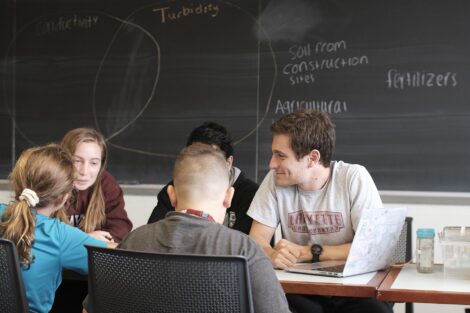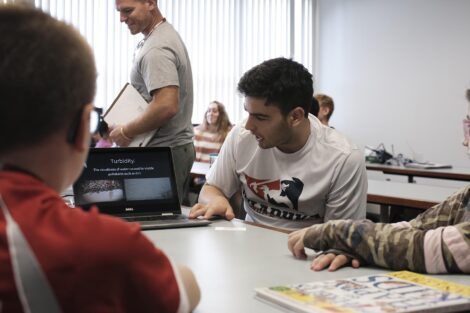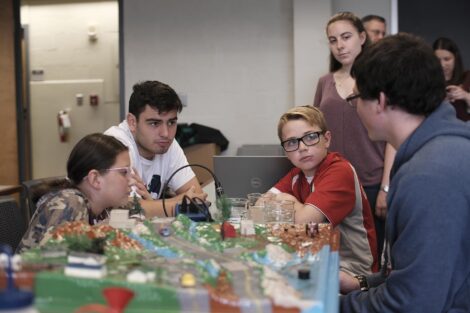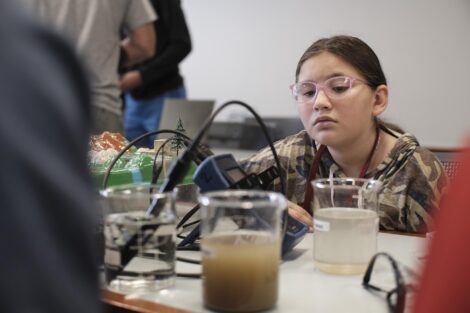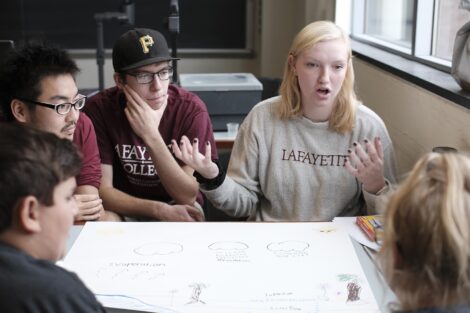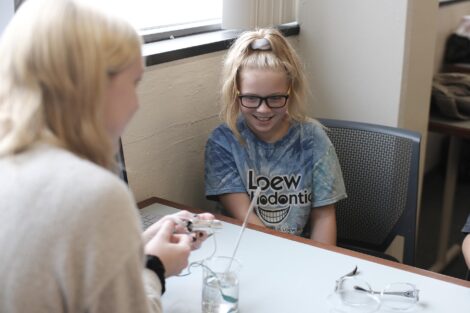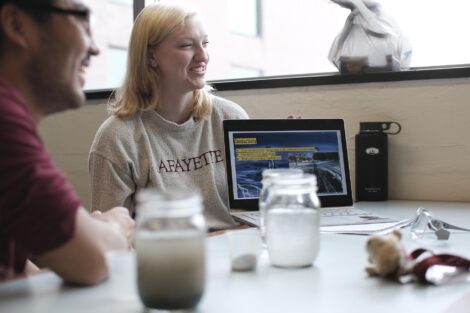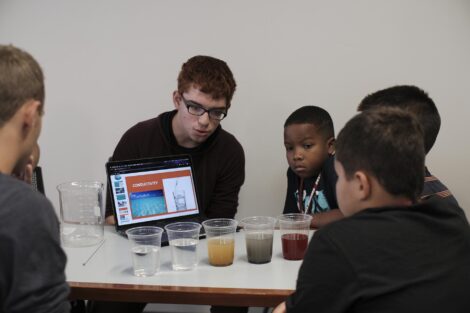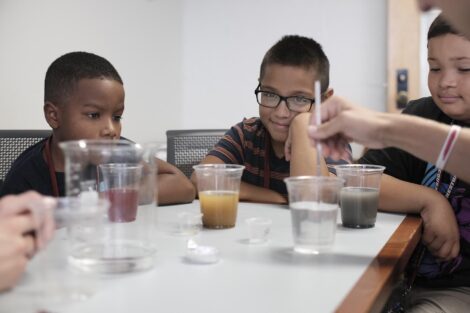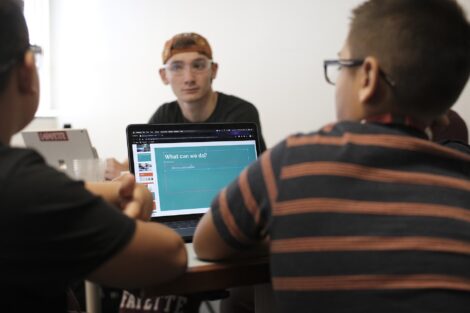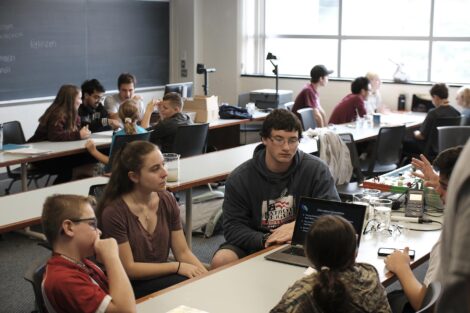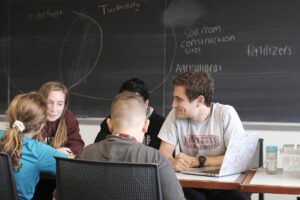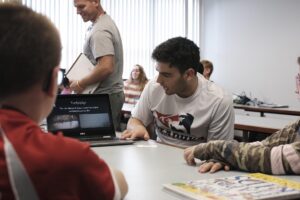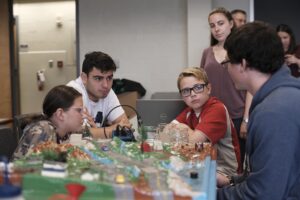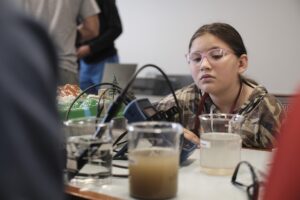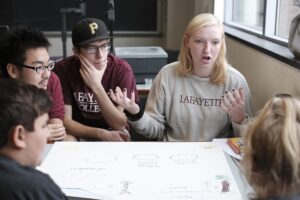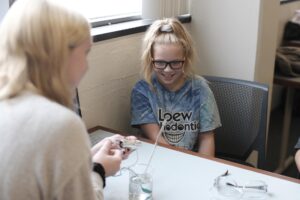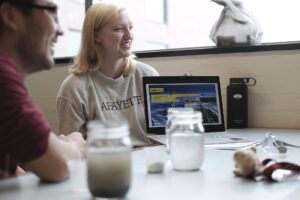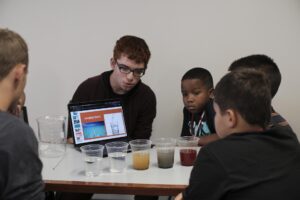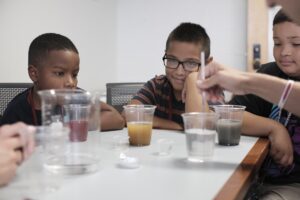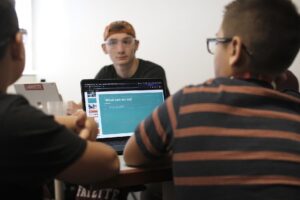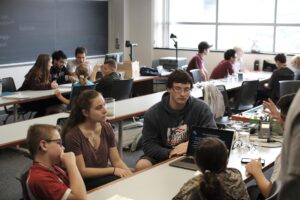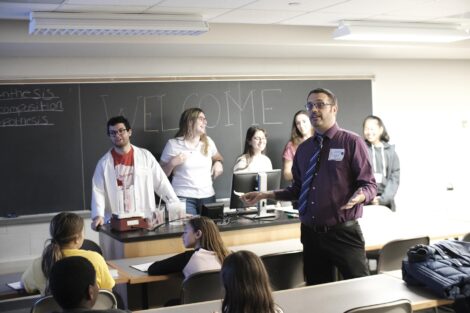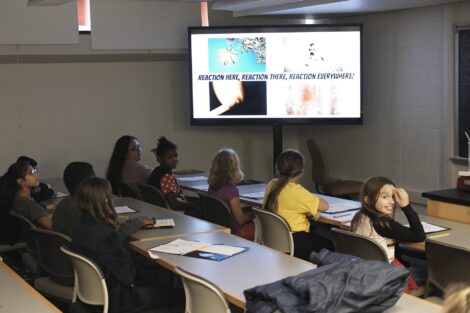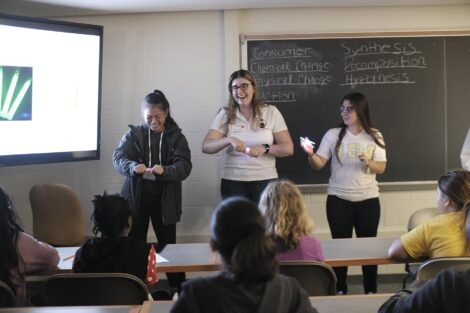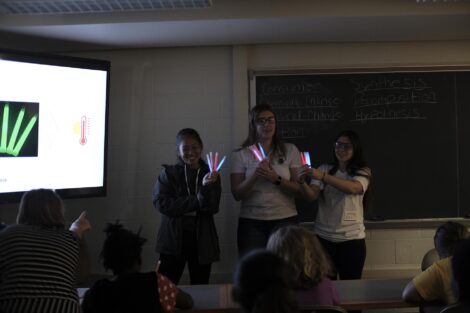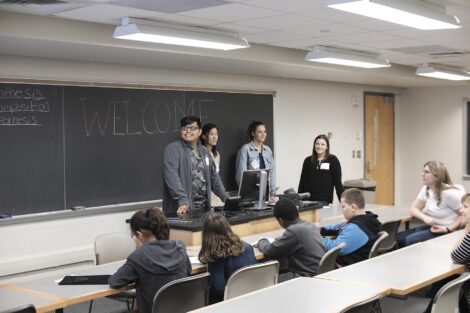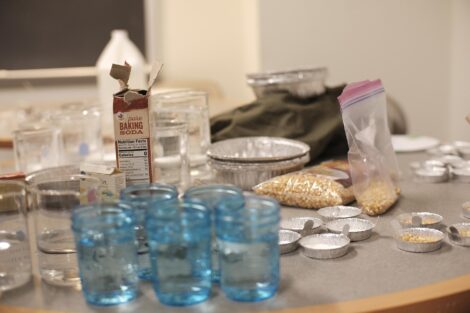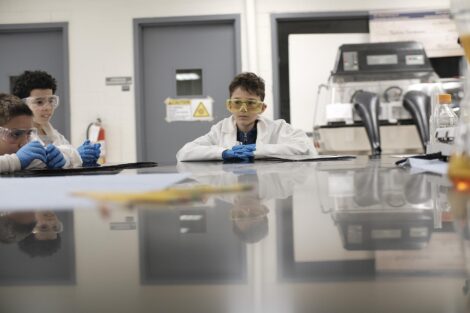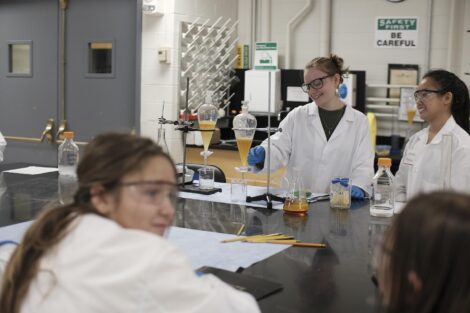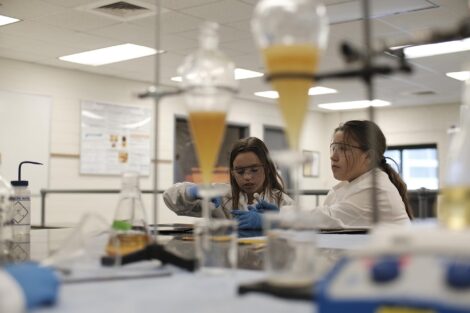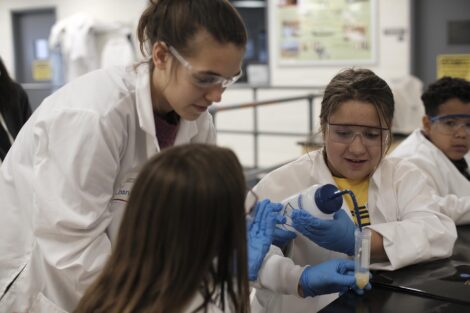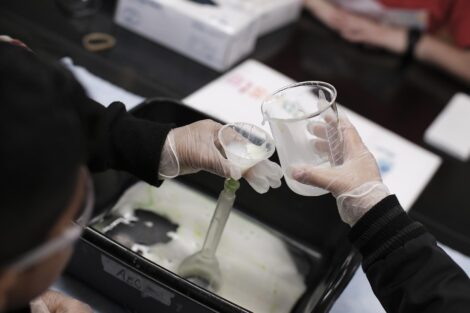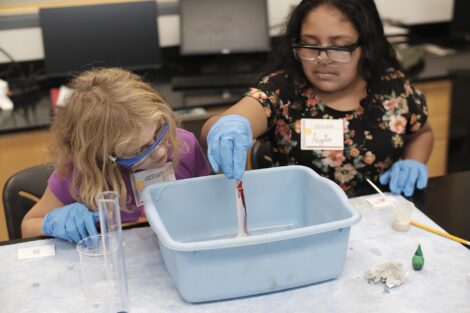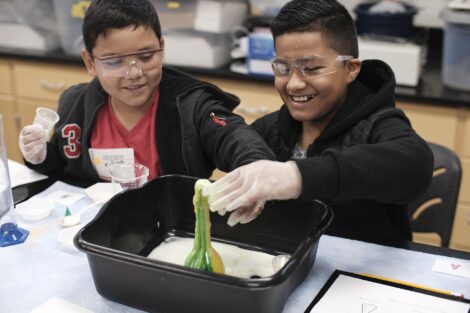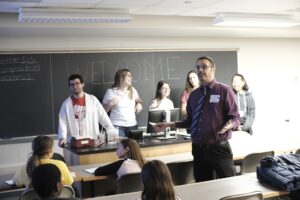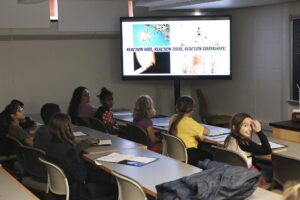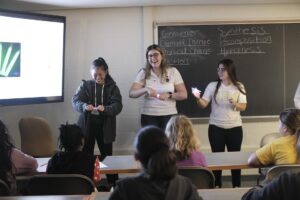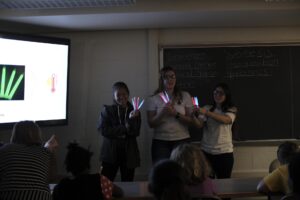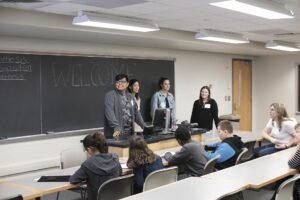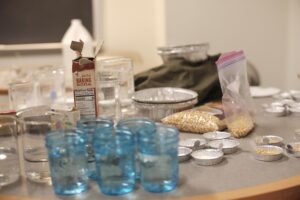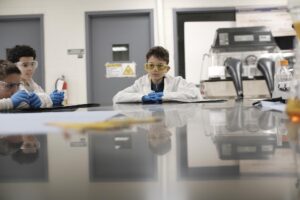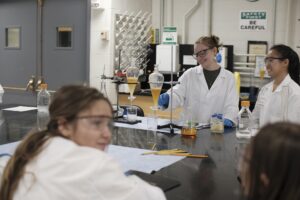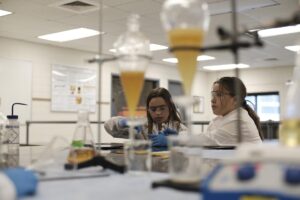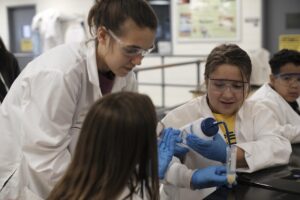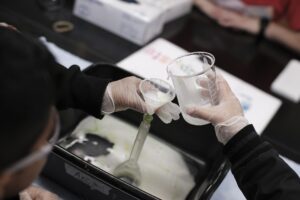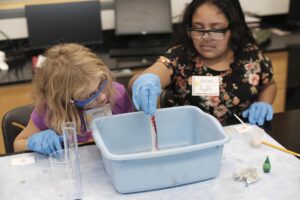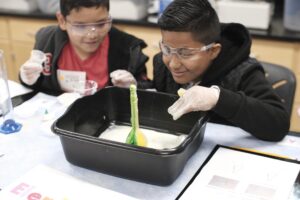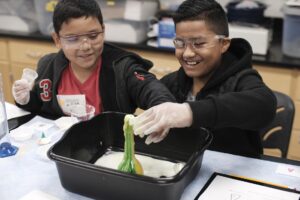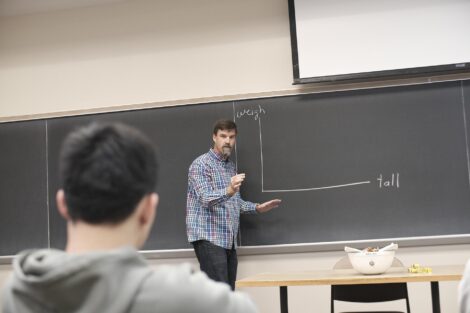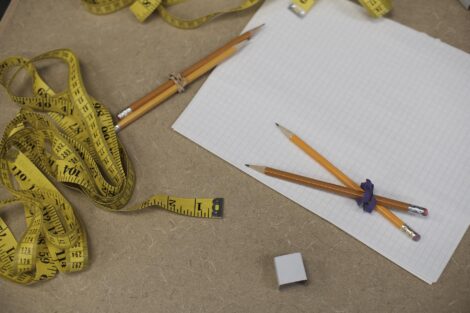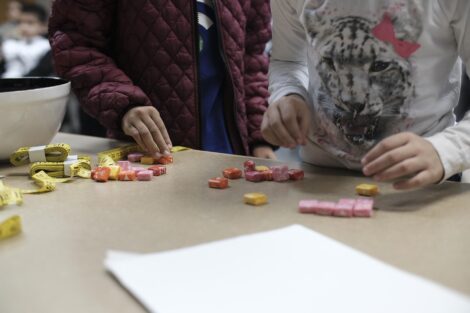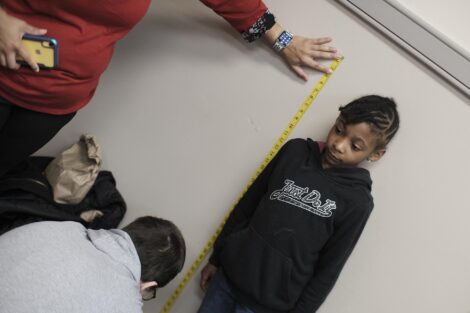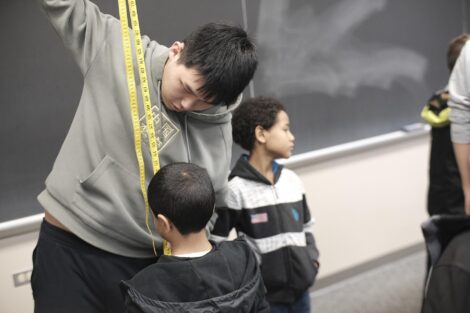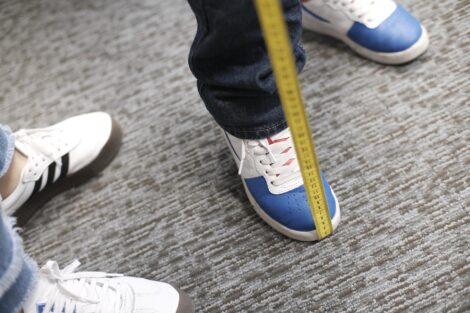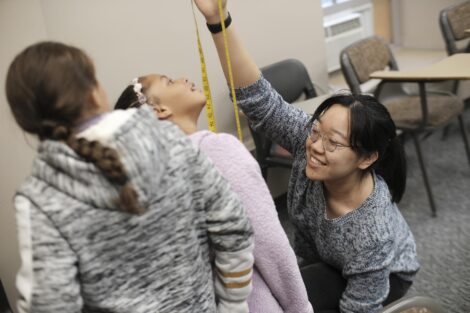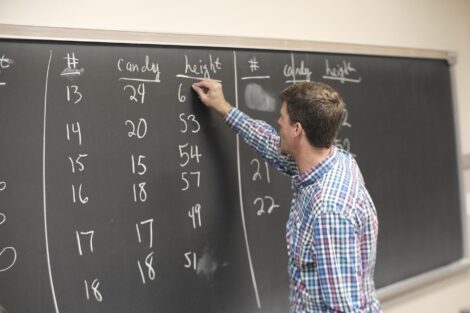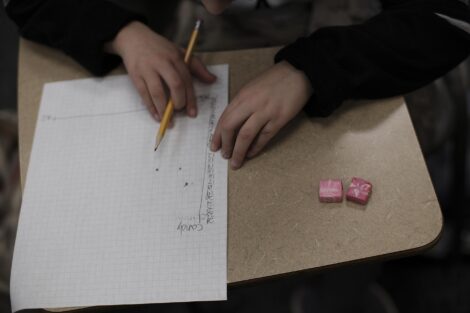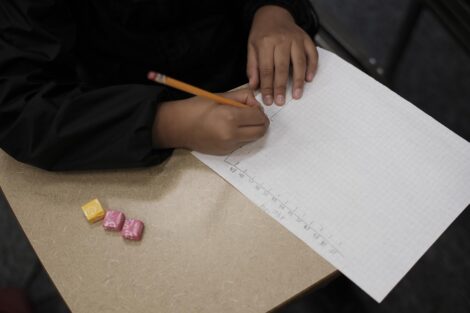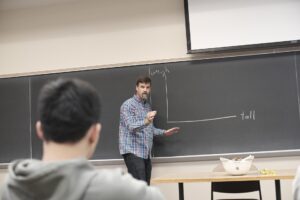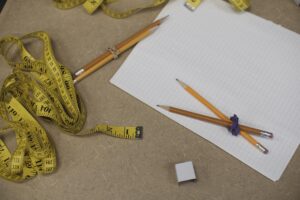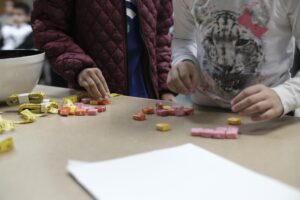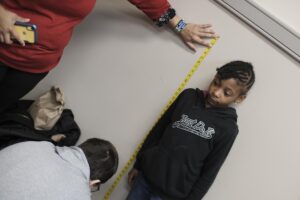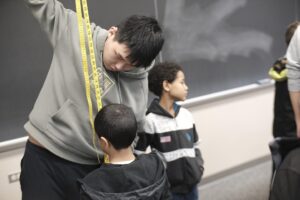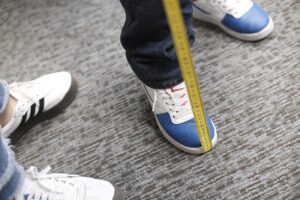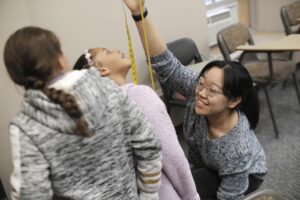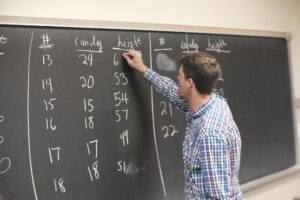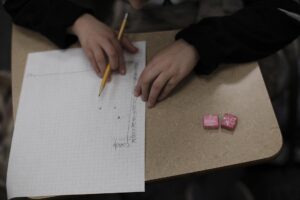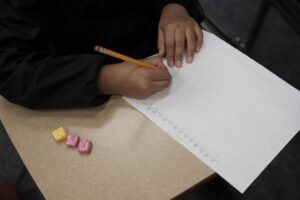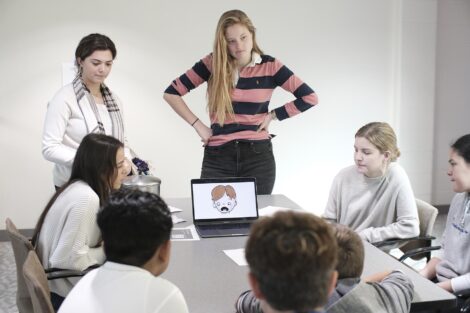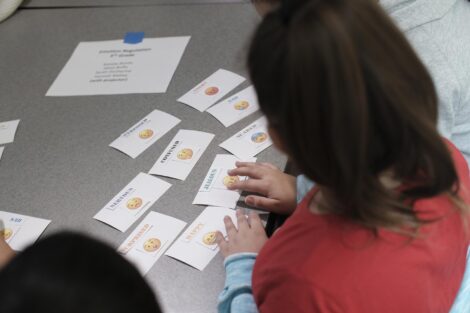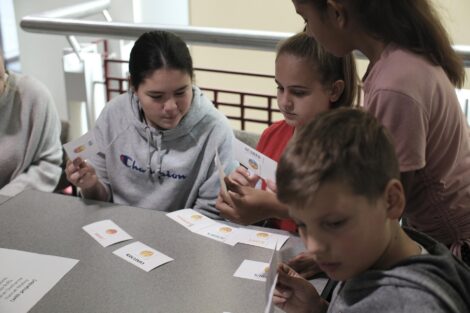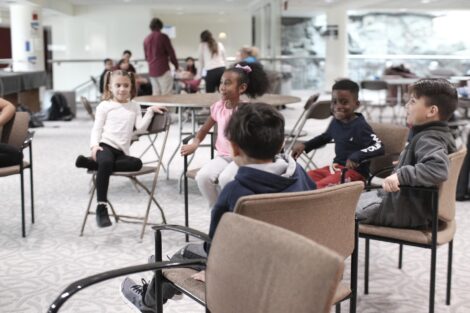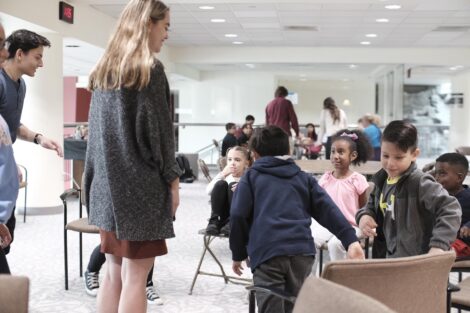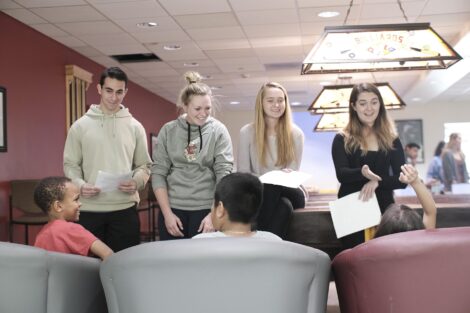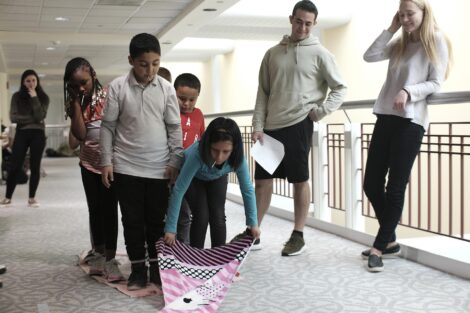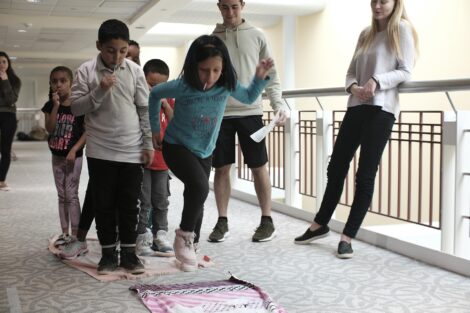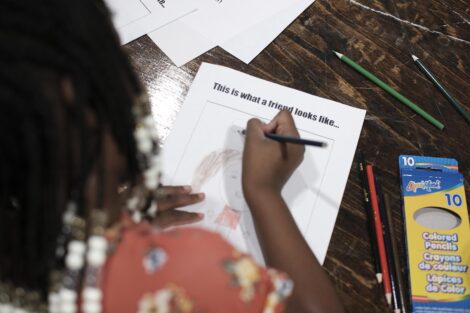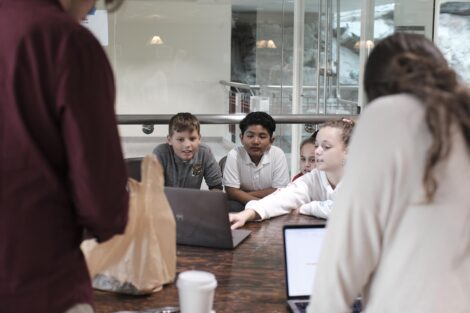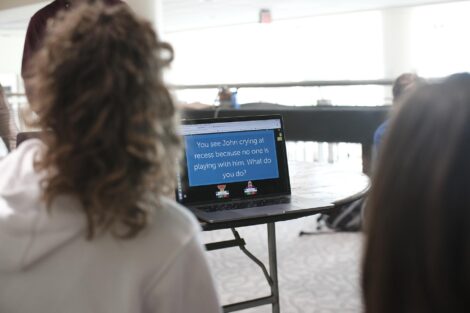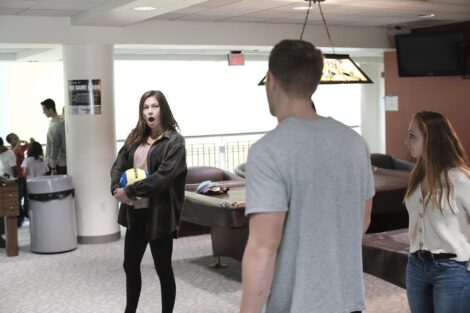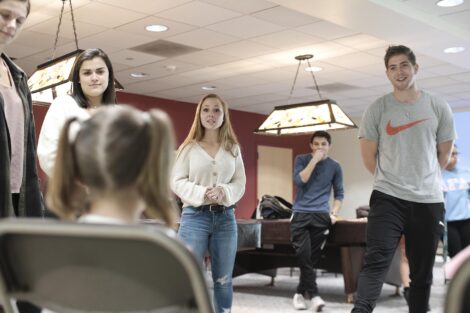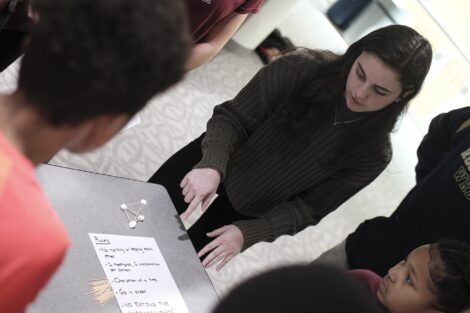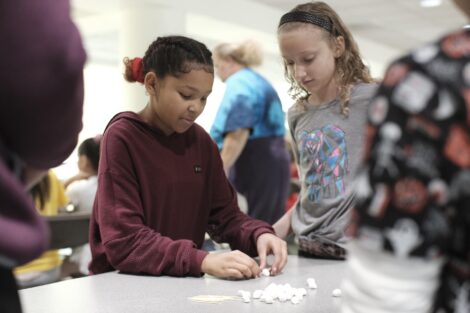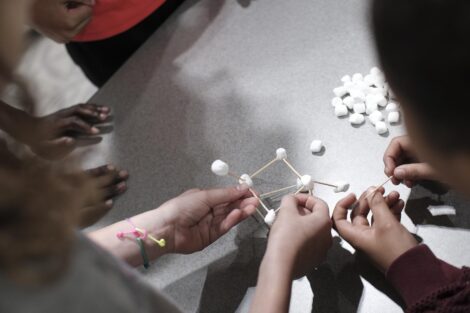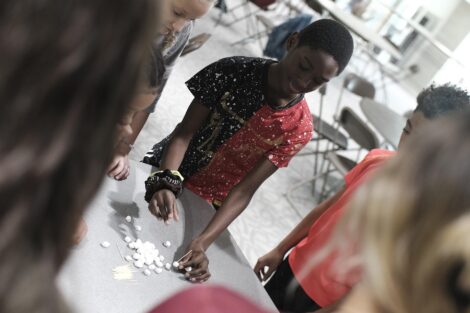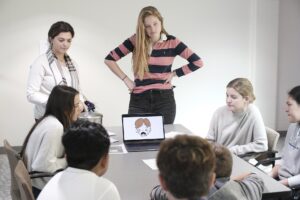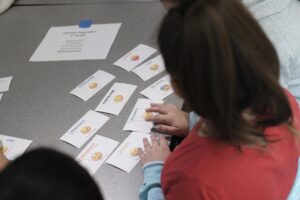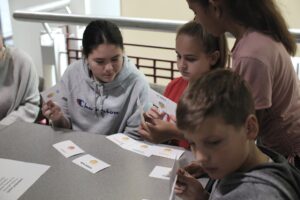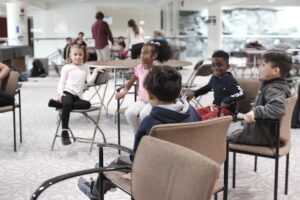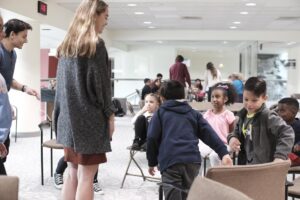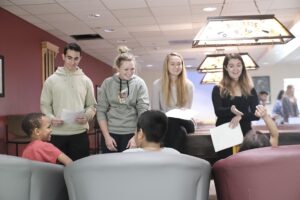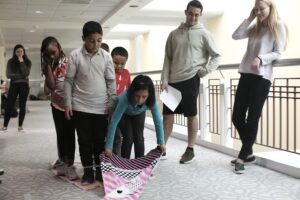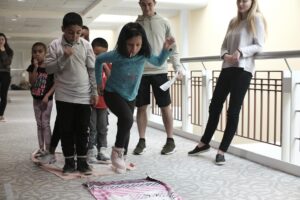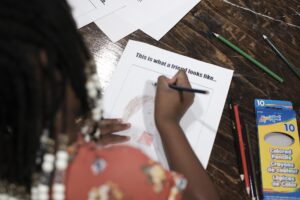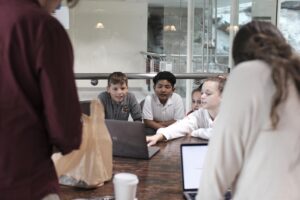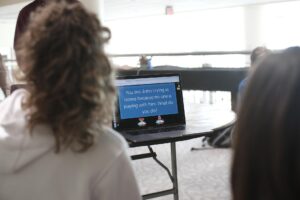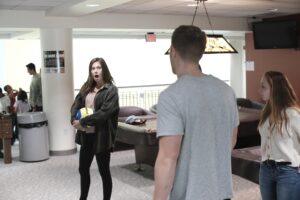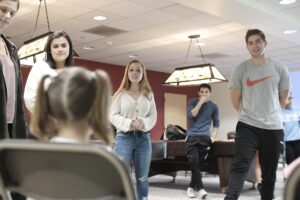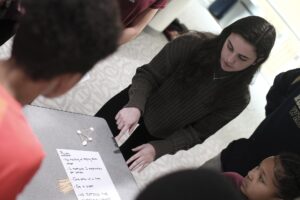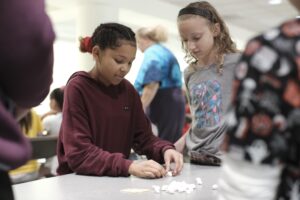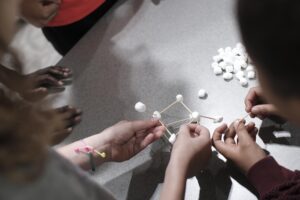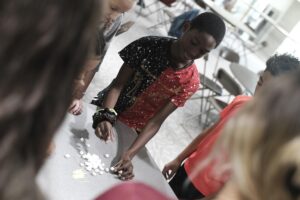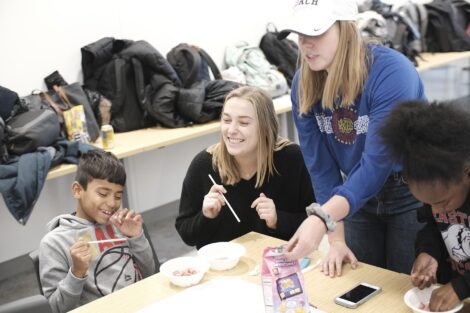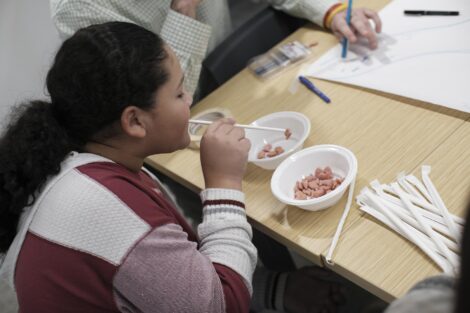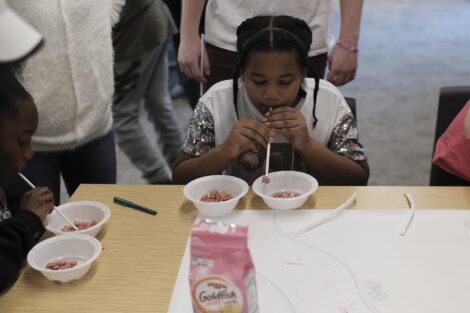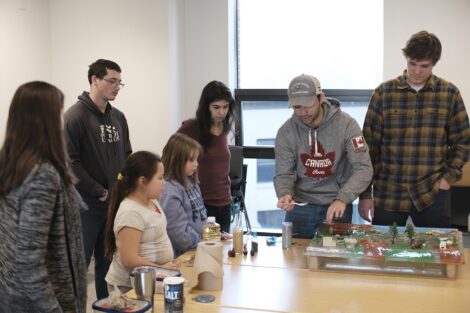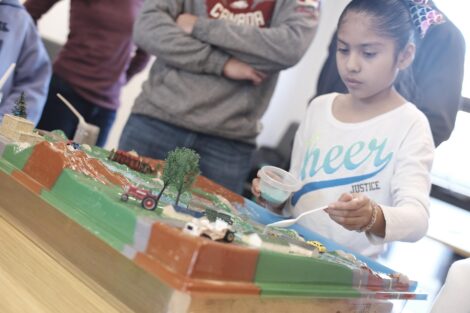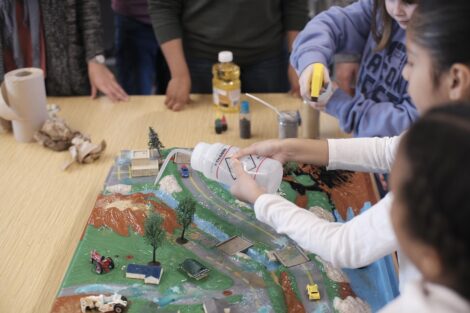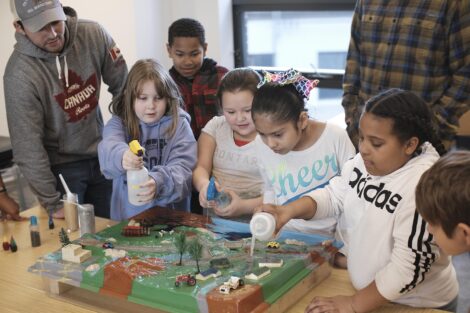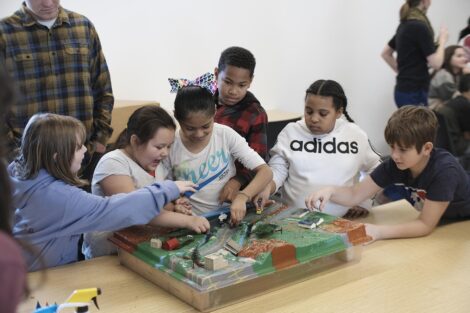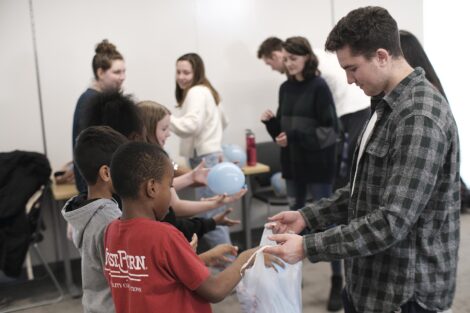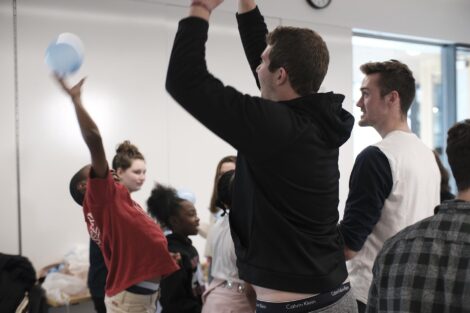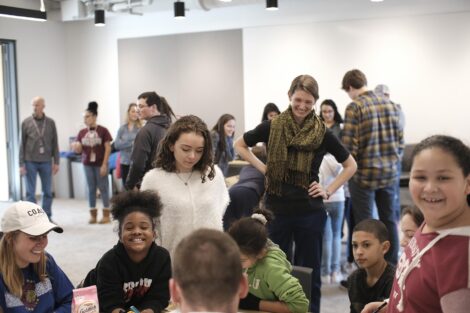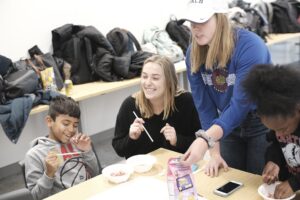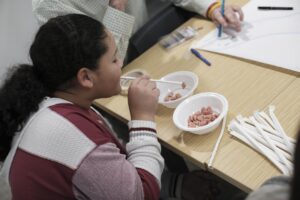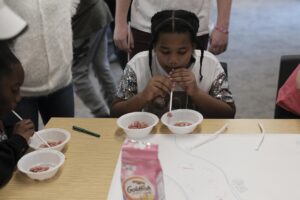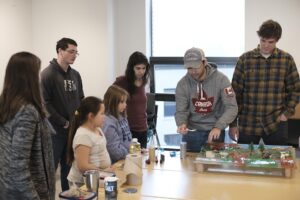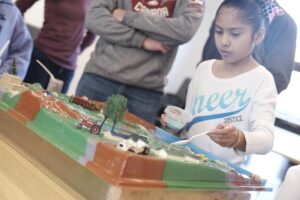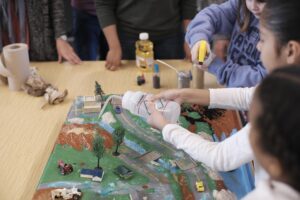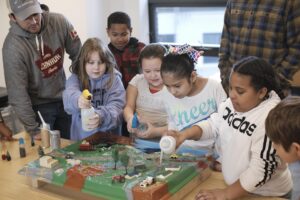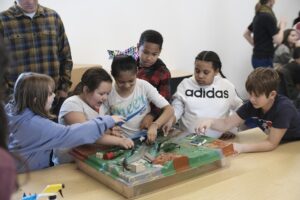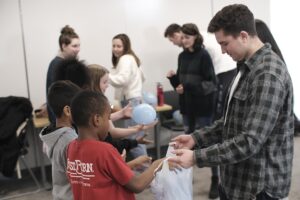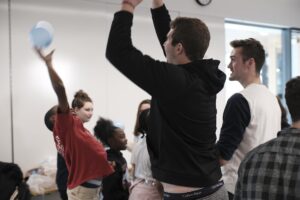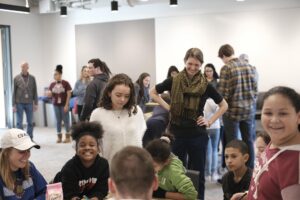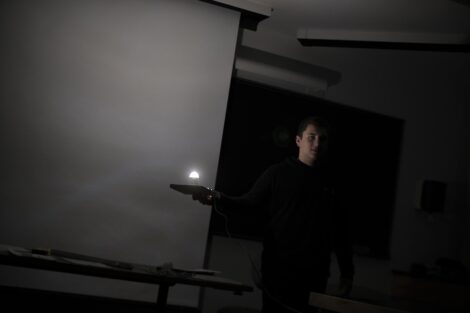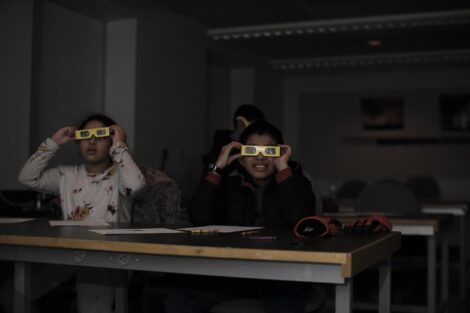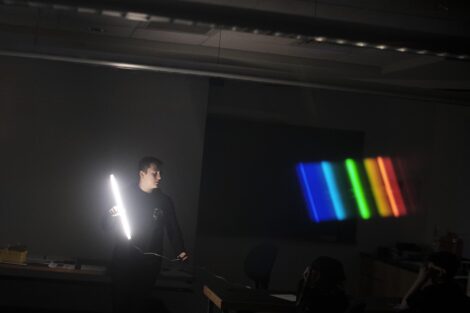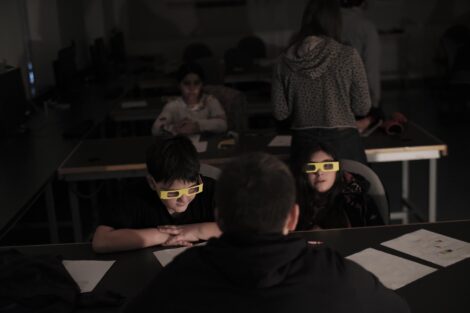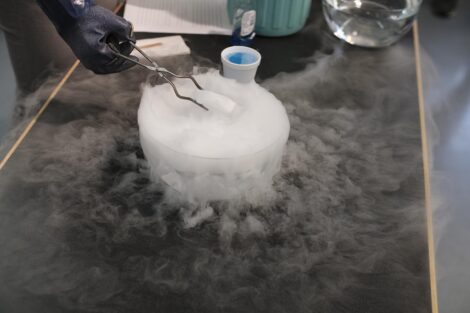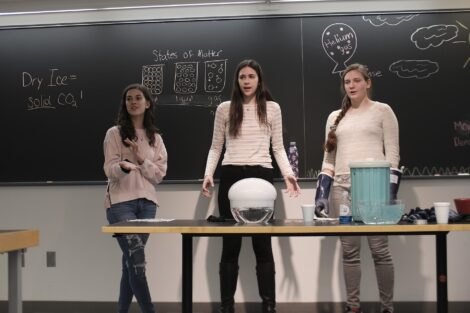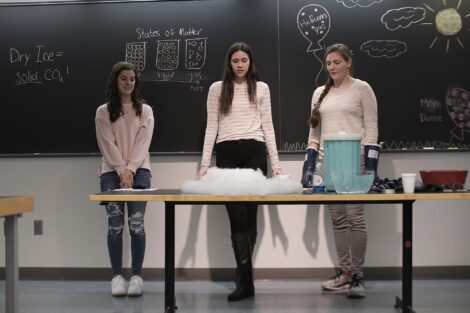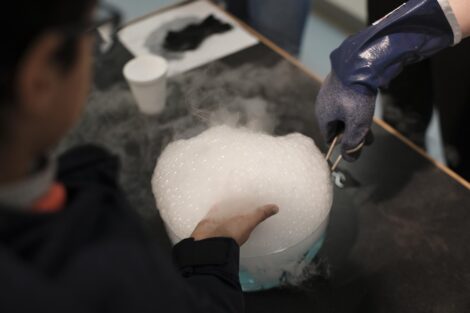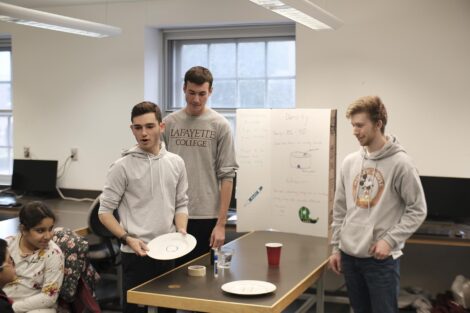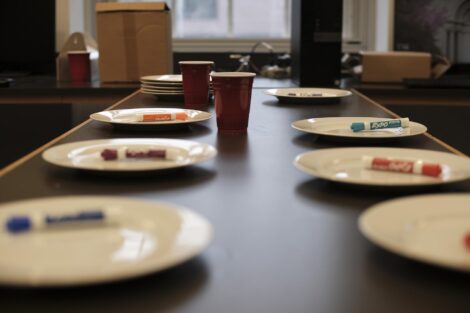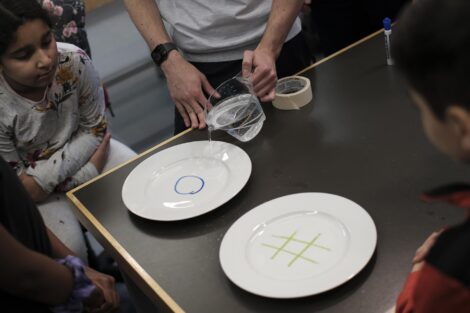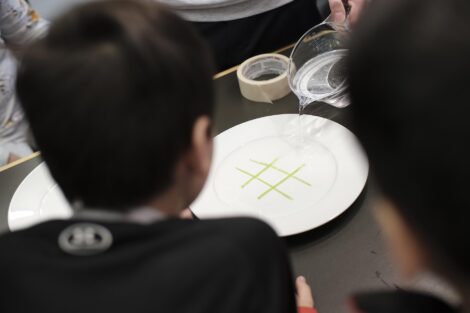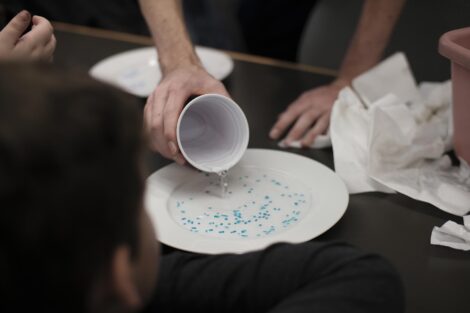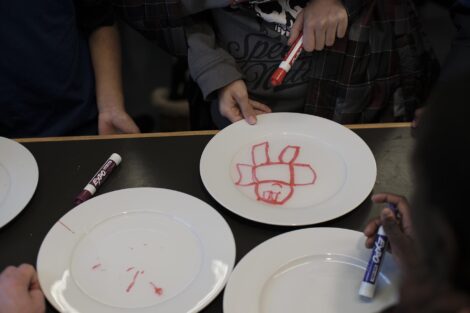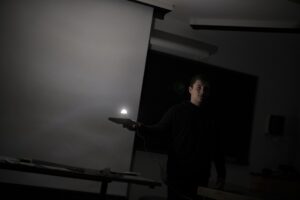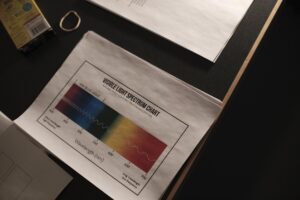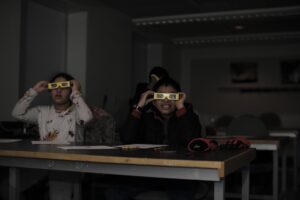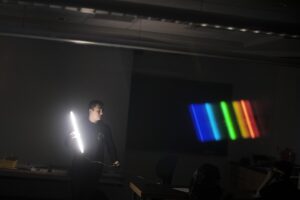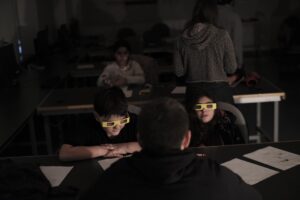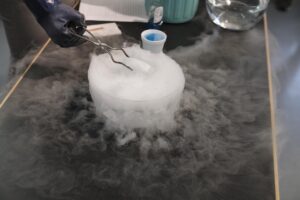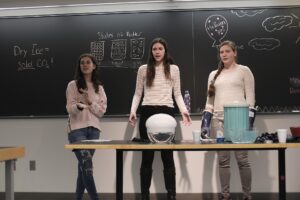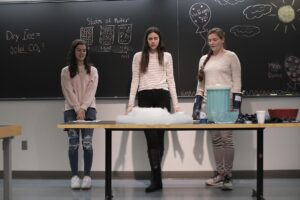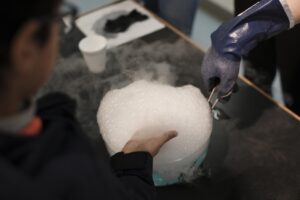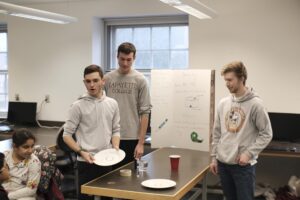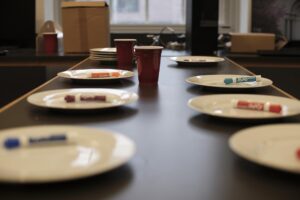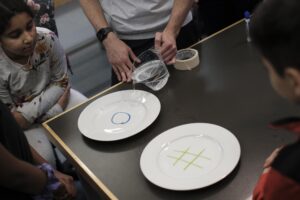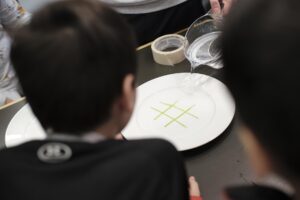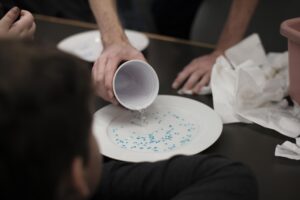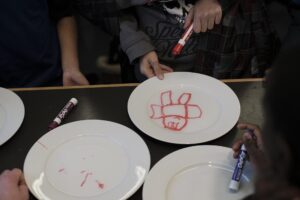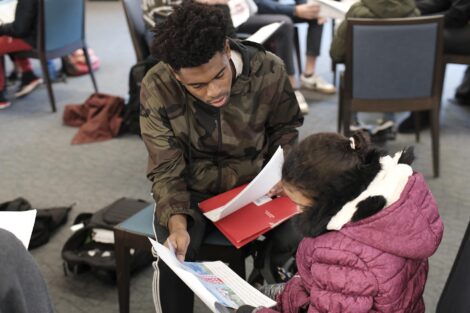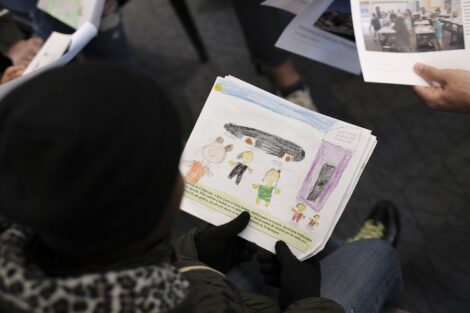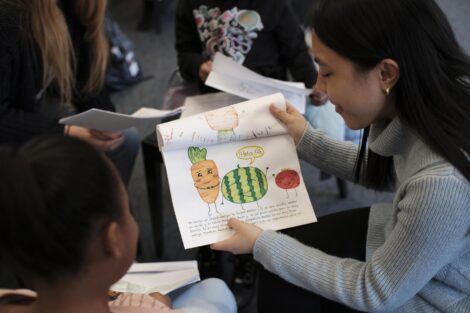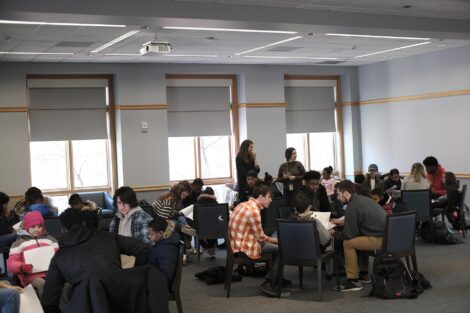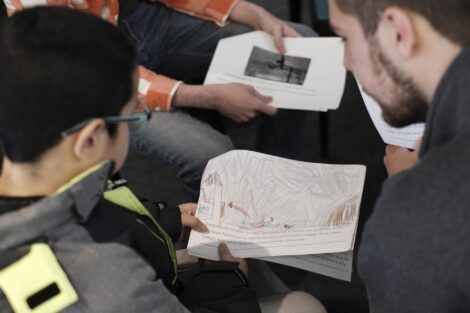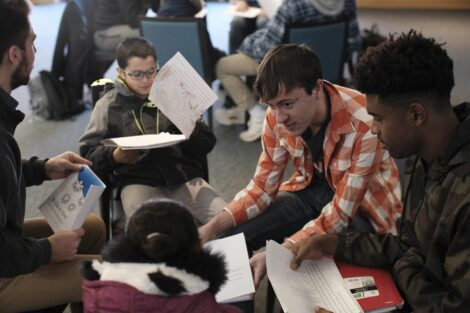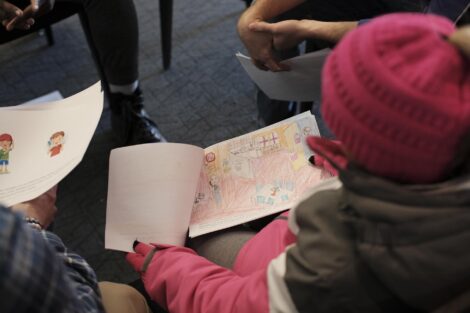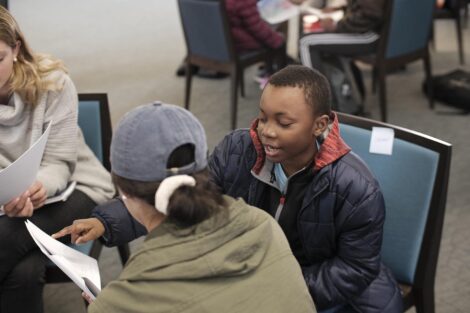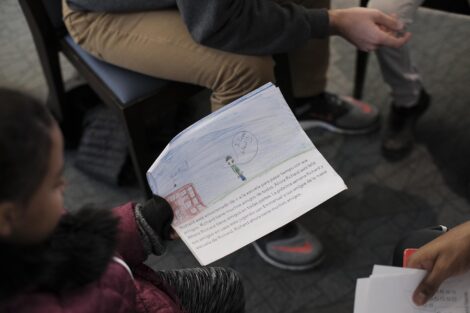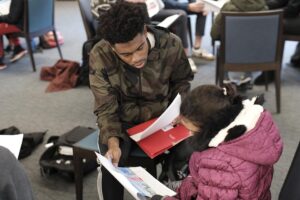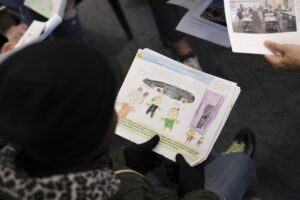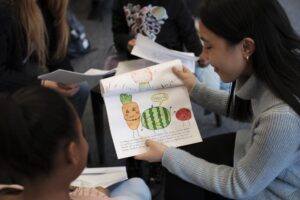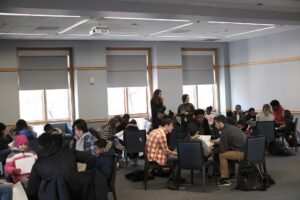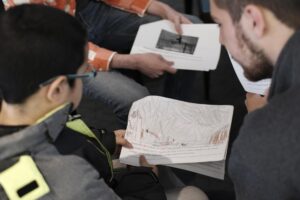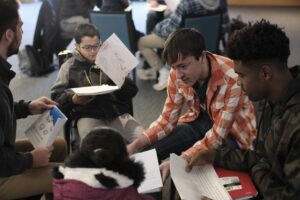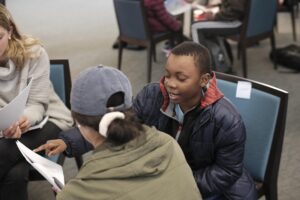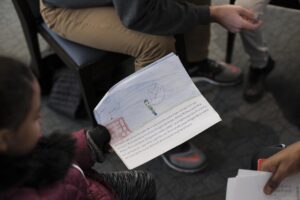Landis Center links faculty, students across community through engaged learning
By Stephen Wilson
A bus arrives with a gaggle of eager elementary school students. After a tour across campus, which has to include the gym and library, and fun lunch, which has to include pizza, they gather in a college classroom.
Greeting them are smiling Lafayette students who are eager to connect, teach, and play.
Such scenarios have been the case all semester long as Lafayette faculty and students have worked with Easton Area School District teachers at two local elementary schools, both of which have programs in place to help level the playing field for students facing more barriers to success.
Coordinating these collaborations falls to the team at Landis Center for Community Engagement. Connected Classrooms is an initiative within the center’s Aspirations program that promotes college and career awareness, exploration, and readiness among students in Easton Area School District.
“Our goal is to bring opportunities for innovative teaching and learning to our faculty and students and, in turn, support elementary teachers and inspire elementary students to begin to see college as a goal,” says Art Kney, professor of civil and environmental engineering and director of Landis Center. “That’s why we call this program Aspirations. We can help influence these students to aspire for a lifetime of educational success.”
Leading these initiatives are Lafayette faculty and students who work hard to create fun, engaging, and impactful lessons on a variety of topics.
“The students meet with elementary teachers to review lesson plans and ensure that the material is age appropriate,” says Chelsea Cefalu, assistant director of community-based learning and research.
Then the fun begins, extending concepts from elementary classrooms into hands-on activities and active learning.
“It shows the elementary students that college students are learning similar material, and how engaging college classrooms can be thanks to professors who take an innovative approach to teaching,” says Cefalu.
Here’s a quick glimpse into what has happened this semester:
Art Kney and Jen Rao
Civil engineering
Class: Introduction to Environmental Engineering and Science
+
Mike Strohl
Cheston Elementary
Fifth grade class
Robin Kelchner
Paxinosa Elementary
Fourth grade class
Concepts covered:
- Water cycle
- Water pollution
- Watershed
- Turbidity
- Conductivity
Value:
“This is priceless,” says Strohl. “The students see others who were in fifth grade classes who now go to college. It helps my students consider their actions in this class and their college aspirations. They might not have thought of this as an option before. Today they get to see everything—the beautiful campus, meaningful engagements, and positive interactions.”
Michael Senra
Chemical engineering
Class: Reaction Kinetics and Reaction Design
+
Dee Lohman
Paxinosa Elementary
Fifth grade class
Concepts covered:
- Hypothesis
- Kinetics
- Reactions, like elephant toothpaste
- Bio-fuels
Value:
“The students get out of the school and into the community,” says Lohman. “For many, this is the first time they have seen the College despite living in Easton. They are excited to be scientists and do experiments. They are proud to demonstrate positive behavior choices and get noticed by young adults. They are truly learning.”
Trent Gaugler
Mathematics
Class: Advanced Regression Analysis
+
Ally Antonson
Cheston Elementary
Third grade class
Concepts covered:
- Data gathering
- Scatter plot diagrams
- Regression
Activity:
Each third grader could grab as much candy as he or she could lift out of the bowl—just no using the sides of the bowl to help. They then had to count it. Their college partner measured the student’s height. The question they all had to answer: Would height impact the amount of candy scooped up? Gaugler and Antonson captured the data on the board before the third graders plotted out the results… and ate lots of Starbursts. The results? Height helped when grabbing from the bowl, but so did a love of candy.
Lauren Myers
Psychology
Class: Lifespan Development I
+
Michelle Gifford
Second grade class
Sheila Baab
Fifth grade class
Paxinosa Elementary
Concepts covered:
- Emotions
- Empathy
- Communication skills
- Breathing
- Mindfulness
Activities:
Lafayette students visited the children’s classrooms and then in teams designed brief activities about social-emotional skills. For instance, children learned about empathy through a game in which one person stands in the center of the group and says a statement about him/herself, and everyone else “shuffles their buns” to a chair if they also share that identity or activity. Another group created a Jeopardy game with scenarios about friendship, pro-social behavior, and conflict resolution.
Value:
“These activities are so valuable,” says Gifford. “They help teach teamwork so rather than win or lose, these games help the students work together, express their feelings, and manage their emotions.”
Andrea Armstrong
Environmental studies
Class: Water Problems, Water Solutions
+
Paul Cinoa
Cheston Elementary
Fourth grade class
Concepts covered:
- Water rights
- Watershed
- Pollution
- Water use
- Overfishing
Value:
“Coming to campus is a huge value,” says Cinoa. “There is a college in our town, so we should take advantage of it. My students get to interact with college students who are learning the same stuff. It’s a wonderful chance to make a connection. This is such a great program and partnership.”
Zoe Boekelheide
Physics
Class: First-Year Seminar: “Demonstrating Science”
+
Krista Yetter
Cheston Elementary
Fifth grade class
Concepts covered:
- Kinetic energy
- Chemical reactions
- Adhesion
- Density
- Diffraction
Activities: Students used special glasses to see how light changes shape across the spectrum when using different light sources like LED, fluorescent, and incandescent bulbs. Another experiment had students using dry erase markers to draw on white ceramic plates. When water is poured on the plate, the ink’s adhesion changes, lifting the image off the plate and appearing animated in the water. Finally, dry ice! How it can illustrate the different states of matter.
Katie Stafford
Foreign languages and literatures
Class: Spanish 101
+
Courtney D’Emilio
Paxinosa Elementary
Fourth grade class
Concepts covered:
- Reading
- Translating
- Illustrating
Value:
“The stories the college students wrote unfolded one page at a time as my students translated and illustrated them,” says D’Emilio. “There is a high population of Spanish speakers in our school, and many in my class are more fluent than the college students, so today forms an important link between the value of English and Spanish, learning and age, and college and community.”
